Welcome to another edition of Web Analytics Monday, where we break down complex Google Analytics topics into actionable insights. Today we are going to take a look at how Google Analytics is measuring conversions.

Let’s get some terminology out of the way
GA throws around a lot of terminology and, just to keep you 100% frustrated, sometimes they change it. Let’s get an understanding of what it is Google is talking about when we discuss “goals” and “conversions.”
Goal: Goals are created in the Admin section of Google Analytics. At the most basic level, you can create a goal to record a specific action you want visitors to take. For example, you can create a goal for every time a visitor completes a contact form.
Conversion: Any time a goal is met by a visitor, GA will record a conversion. With the data recorded, you can segment conversions by source or landing page and even evaluate conversion rates.
Now it’s going to get tricky…

First interaction model: Learn to love it
Let’s say that we want to evaluate the performance of our site’s top landing pages. We are going to go to Behavior → Site Content → Landing Pages. Then we are going to sort by conversions.
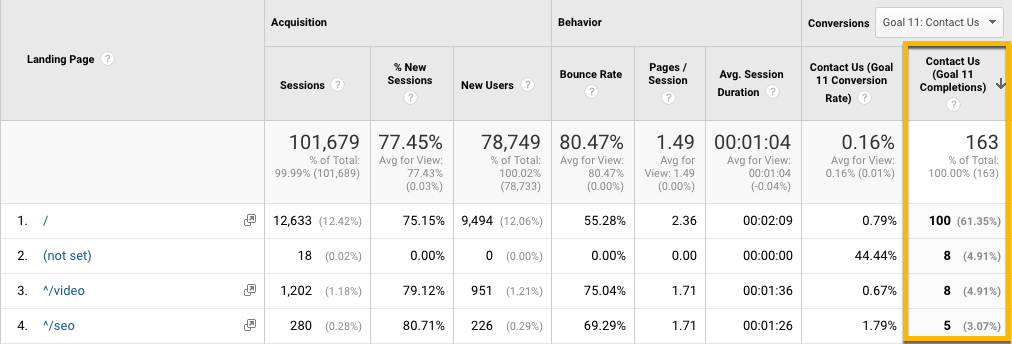
This report tells us the homepage had 100 “Contact Us” conversions (over the past three months). But what does that even mean? How does a page “create” a conversion?
This is where the first interaction model comes into play. By default, GA gives full credit to the first page a visitor lands on (their landing page) for a conversion.
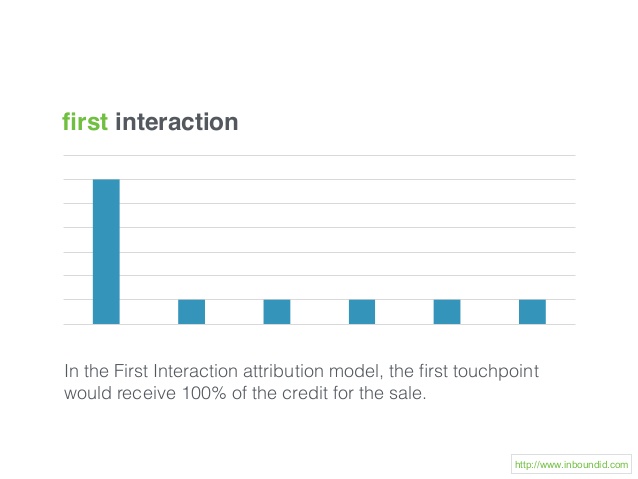
So regardless of what a visitor did after landing on that page, whether they viewed an additional 57 pages, or zero pages, full credit will always go to the page they landed on. The rationale for this type of attribution is: The visitor’s landing page was responsible for bringing him/her to the site; were it not for that landing page, they likely would have never arrived.
You can quickly start to see that there are issues with this model. It doesn’t allow for partial credit to be given to content that may have assisted in the conversion. And logic tells us it’s not likely that one single page is 100% responsible for triggering a decision.
Never fear, there are workarounds!
The first workaround is taking the opposite approach of evaluating the last interaction model. Rather than giving full credit to the first piece of content a visitor engages with, we are going to look at the last pieces of content they viewed before they decided to convert. You can argue that it was these last pieces of content that actually triggered a conversion.
Go to Conversions → Goals → Reverse Goal Path.
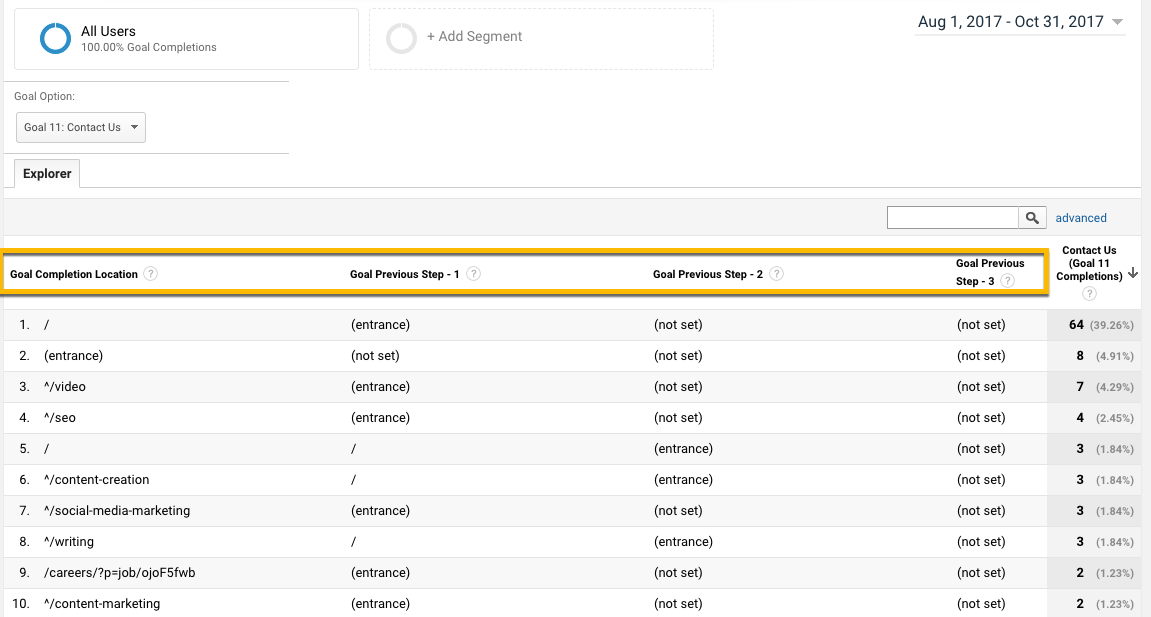
It’s not pretty, but this chart shows you the previous three pages visited for every conversion. If I wanted to see how a particular page or section of a website is performing on a last interaction basis, I would export this sheet into an XLS file, then use the find/replace functionality to identify my target page(s). For example, to know how my SEO Content Writing Services page is performing, I would do a find and replacefind/replace for the URL “^/SEO”.
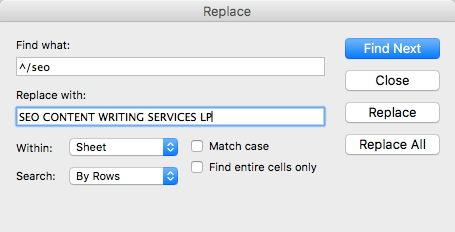
With some quick sorting, we can see exactly how visitors are interacting with this page before converting.

The majority of visitors convert immediately after viewing this page. Good to know!
Don’t diss the assist!
The second workaround involves creating an advanced segment that will tell us how many visitors convert after viewing a piece of content at some point during their journey, regardless of whether it was at the beginning or the end. This addresses all the visitors in the middle that are getting no attribution.
Create a new advanced segment and select “Sequences.”
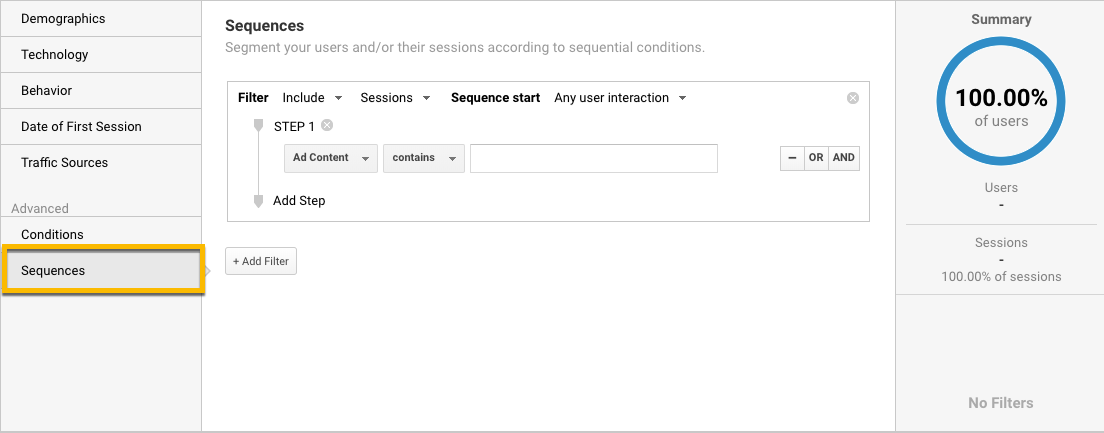
Now we will select the same page (^/SEO) as step one. Step 2 will be followed by a Contact Us conversion.
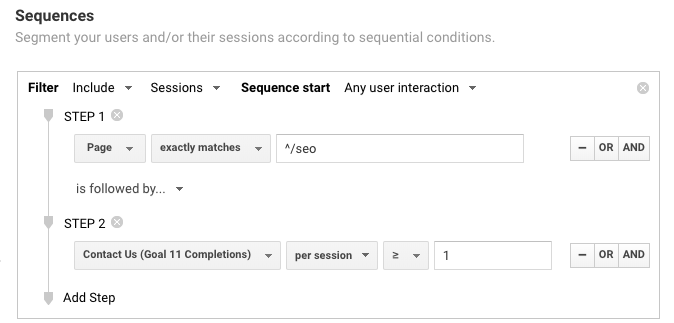
The resulting number of conversions should be larger than either of the two methods listed above because it will include any touchpoint with this page during a visit. Save the segment, then go to Conversions → Goals → Overview.

This page was involved in nine conversions. In layman’s, nine times a visitor viewed this page at some point during their session, then contacted us.
What a triumvirate!
As you can clearly see, attributing conversions is not an exact science. However, web analytics aren’t about exact science. The whole point is to understand trends and behavior and, with that data, create actionable insights.
Come back next week for another version of #WAM!




